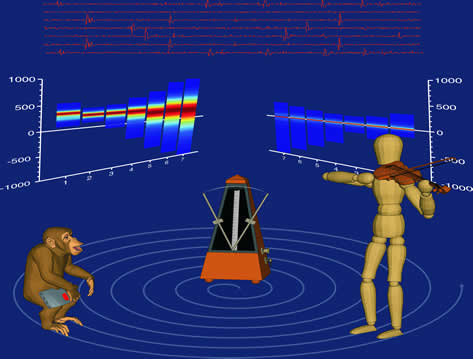Dr. Hugo Merchant
Head of the Laboratory

NEUROPHYSIOLOGY OF PERCEPTION AND PRODUCTION OF TEMPORAL INTERVALS
Many of the activities we do every day depends on the ability to accurately process over time. For example, processing time intervals are involved in the perception of rhythm in music or control the interception of moving targets. In the laboratory we are interested in determining the neurophysiological bases of time estimation in cortico-thalamic circuit-basal ganglia of primates. To understand this problem Rhesus monkeys are trained in tasks of perception and production of time intervals. The temporal behavior of the monkeys is characterized by psychophysical techniques and compared the ability of humans to perceive and produce time intervals in the same tasks. Subsequently, records the activity of single neurons in different areas of cortico-thalamic circuit-basal ganglia.
Neuronal activity is analyzed with different parametric techniques in order to establish correlations between different cognitive aspects of time and the responses of single neurons and neuronal populations. This allows circuit delineate the role of cortico-thalamic-basal ganglia in the control of time intervals in the primate, and to determine the neural codes associated with this behavioral process.